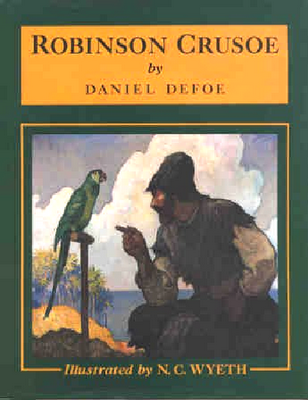". . . to prostitute your work?" [Cage story / Daniel Defoe]

This is what it says it is. Alas, I've never properly read it, though in a vague way a few famous parts are somewhat familiar. Sometime if I lead a life of proper leisure, I may also read Leslie Scalapino's Dafoe (2003). Meanwhile, there's the Cage story.
I like that Willem Dafoe shares a surname with Daniel Dafoe. Are they in fact related?
 I've only seen the Wooster Group once. It was a strange spectacle somewhat based on Flaubert's Temptation of St. Antony (or if you wish, Anthony or Antoine). I mention this because Willem Dafoe has a noted background with the Wooster Group -- though I don't believe he was in the cast when I was at the Performance Garage (probably in 1990). [I may've seen him in other things; but he's mostly familiar from films.] The late Ron Vawter was in the Wooster performance. The late Spalding Gray was another Wooster founder / alumnus not seen that evening. I've not much thought of Spalding in a while. What a marvelous man. One mourns him.
I've only seen the Wooster Group once. It was a strange spectacle somewhat based on Flaubert's Temptation of St. Antony (or if you wish, Anthony or Antoine). I mention this because Willem Dafoe has a noted background with the Wooster Group -- though I don't believe he was in the cast when I was at the Performance Garage (probably in 1990). [I may've seen him in other things; but he's mostly familiar from films.] The late Ron Vawter was in the Wooster performance. The late Spalding Gray was another Wooster founder / alumnus not seen that evening. I've not much thought of Spalding in a while. What a marvelous man. One mourns him.I've not read the Flaubert either. It could perhaps be perused with the Crusoe. But what in the world did those advertising guys mean by the remark to John Cage? Presumably it simply suggests (through the peculiar reference) how they found him to be singular. As singular as, say, a Lilliputian?
Speaking of St. Antoine, there's also Dali's strange painting. But I would need to see it more closely, or read about it or something . . . it's rather frightening. I think I'd prefer one by Giotto. However, I guess that would more likely be of the later St. Anthony of Padua (nearly a thousand years after the Desert Father). I passed thru the Bascillica one evening. I'd spend part of the afternoon taking video footage of the olden University of Padova -- said (by Italians) to be the first university in the world; but this doesn't take into account the old Buddhist ones (like Nalanda). Romeo and Juliet were supposed to have lived in Padua. This was mentioned to me by a friend when I was heading that way (en route betwen Florence and Venice). I met a poet (my friend's neice) who gave me her book; but my Italian fluency was piu povere [? too poor].
Goodness! That Temptation of St. Anthony (Flaubert's) was translated by none other than Lafcadio Hearn (and introduced by Michel Foucault). I may need to acquire the tome. I'd no idea Hearn had translated Flaubert. I was only aware of all the Japanese stuff. Are Lafcadio Hearn and Robinson Crusoe vaguely cognate? I read maybe half a dozen of Hearn's volumes while in high school. A rare Orientalist, he married a Japanese wife and sent dispatches from Meiji Era (明治時代) Japan. He died in his mid-50s . . . only slightly more shortlived than Spaulding Gray.
Of course an interesting little surprise of Cage's story, is his answer "Yes." It seems to be an old recollection.
======
This post represents my Cage story rumination no. 3.
Cage story rumination no. 1 was: "Oh! it's you" [Max Ernst]
Cage story rumination no. 2 was: ". . . to see these things" [Morris Graves]


3 Comments:
The surrealists weren’t supposed to go for prizes, but there’s this Ernst-related factoid about Temptation:
“It is the first and only time that (Dali) participated in a contest. It was an invitational artistic competition for a painting of the theme of the temptation of Saint Anthony, organised in 1946 by the Loew Lewin Company, a movie- producing firm. The winning picture was to figure in a film taken from the story "Bel Ami" by Maupassant. Eleven painters took part in the competition, among them Leonora Carrington, Dali, Paul Delvaux, Max Ernst, and Dorothea Tanning. The prize was given to Max Ernst by jury composed of Alfred Barr, Marcel Duchamp, and Sidney Janis. All these works were shown at an exhibition in Brussels and in Rome during 1947.”
http://dali.urvas.lt/page20.html
Really hilarious Cage poem. And what a compliment for him! Cage is a great cataloguer of compliments.
Perhaps somewhere in Indeterminacy is Cage’s story of driving a van full of dancers and having a gruff policeman search the van and then say to Cage: “I’m going to have to give you a citation.”
To which Cage says “Well, I haven’t had a citation for some time.”
Nice factoid -- the more I see Ernst's paintings (over the years), the more I seem to like 'em. Dorothea Tanning was no slouch either. I was slightly confused (in Cage's other story, blogo-linked earlier) by his mention of Max Ernst and Peggy Guggenheim -- the context suggested them as a couple. I suppose this was post-Tanning. In Venice I remember passing by Peggy Guggenheim's museum in a water-taxi, but not stopping. I should read a proper history of these folks.
But wait -- these days everything's in the Wikipedia (at least in thumbnail-wise). And so, here's the answer (I had it backwards):
<< She [Tanning] met the German painter Max Ernst in 1942 and married him four years later (his fourth wife, after Luise Straus-Ernst in 1918, Marie-Berthe Aurenche in 1927 and Peggy Guggenheim in 1942). >> Art is long, marriages are brief . . .
My view fluctuates between whether Picasso or Ernst was actually a better painter.. Ernst had a better grasp and execution of the conceptual aspects of painting than anyone, and his works are more ‘challenging’ for those who like to live with images for long periods of time. It’s easy to underestimate Picasso, tho, even when he is synonymous with genius in painting people aren’t giving him enough credit.
Max was with Leonora Carrington before WW2 when the Surrealists had to go to the South of France and figure out whether they had to get out. A very naive but helpful US diplomat saved a lot of Surrealists and got them passage to the US. Ernst was hanging his paintings up outside his apartment for food money then. Carrington had a breakdown and broke up with Ernst. She now lives in Mexico City and she became one of the greatest Mexican painters.
Then Peggy and Max hit it off when Max crossed the pond, and this power couple in NYC sort of set the tone for the next 50 years of art. Eventually this got strained and Max was seeing other people; Tanning was a young painter that idolized Ernst, and they had very happy times together when they set up house in the SW; I agree that Tanning's work is wonderful.
Never been to Venice but the Guggenheim is near the top of my list there.
Post a Comment
<< Home